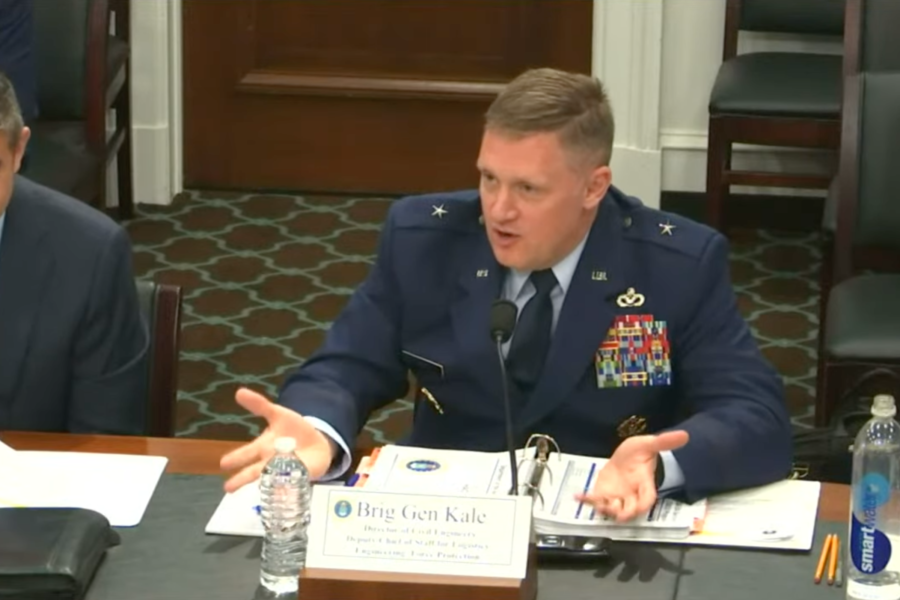It has been more than three years since Tyndall and Offutt Air Force Bases were devastated by natural disasters just a few months apart—and the rebuilding process will still take years to come, lasting most of the 2020s, a top Air Force official told Congress.
And while the Air Force has already received $5.3 billion in 2020 to rebuild the bases, the service will need more funds in fiscal 2023 and 2024, Brig. Gen. William H. Kale III, the Air Force director of civil engineers, told the House Appropriations military construction and veterans affairs subcommittee April 28.
Kale’s update on the rebuilding process came in response to questions from Rep. John Carter (R-Texas), the subcommittee’s ranking member, who noted that as part of its 2023 unfunded priority list, the Air Force included $286 million for natural disaster recovery at Tyndall, Offutt, and Joint Base Langley-Eustis, Va.
“Yes, we do need more funding in [fiscal year] ’23. That amount is included in our unfunded priority list. … And as of right now, the way the market is working and how things are going, I suspect that we will also need some money in FY ’24 for that,” Kale told Carter. “I can’t give you an exact amount right now on that.”
Carter also asked Kale for an updated timeline on when all projects related to the recovery at the two bases would be finished, “so we all can have a party.” Kale put that projected end date in the “FY ’27- ’28 timeframe as when everything will be done program-wise.”
Lengthy timelines and rising costs are not new to the process, given the widespread destruction caused by Hurricane Michael at Tyndall and flooding at Offutt. Initial estimates for rebuilding Tyndall jumped from $3 billion to $3.6 billion, with a projected timeline of up to a decade. Meanwhile, Offutt’s cost estimates started at $650 million and are now topping $1.1 billion, with the projected end date slipping from 2024 to 2027.
Kale’s timeline is largely in line with the latest estimates, which could mean a decade-long recovery process for both bases.
However, the need for more funds to be appropriated by Congress is also running up against a military construction budget that is slated to shrink in 2023, as evidenced by the natural disaster recovery money getting pushed to the unfunded priorities list.
On top of that, what money is in the $2.26 billion MILCON budget request is mostly dedicated to the beddown or support of new weapon systems. The biggest chunk of that is for the LGM-35A Sentinel, or as it was called until recently, the Ground Based Strategic Deterrent.
All told, the Air Force is seeking $444 million in military construction for the Sentinel in 2023, and up to $2 billion in the next five years, Carter said. Acting Assistant Secretary for Installations, Environment, and Energy Edwin H. Oshiba acknowledged that it “is a big, humongous project.”
However, Oshiba said the MILCON projects for Sentinel are on track and proceeding in lockstep with the development of the weapon system itself. Still, even with the focus on the new system in the budget, there is potential for delays, Kale warned.
“The two things I’m most worried about [are] No. 1, you know, when we have delays with [continuing resolutions], that can have a huge impact to this program, in particular, and we would ask to work with the committee here for help on that,” Kale said. “And then No. 2, this is a very highly technical and complex program, and there will be times where we are going to have potential cost implications, and with the reprogramming limits at $2 million and such a low percentage, that can add a significant time increase to that program.”
Such reprogramming limits have caused issues in the past, including for the natural disaster recovery efforts that are still ongoing, Kale noted.

